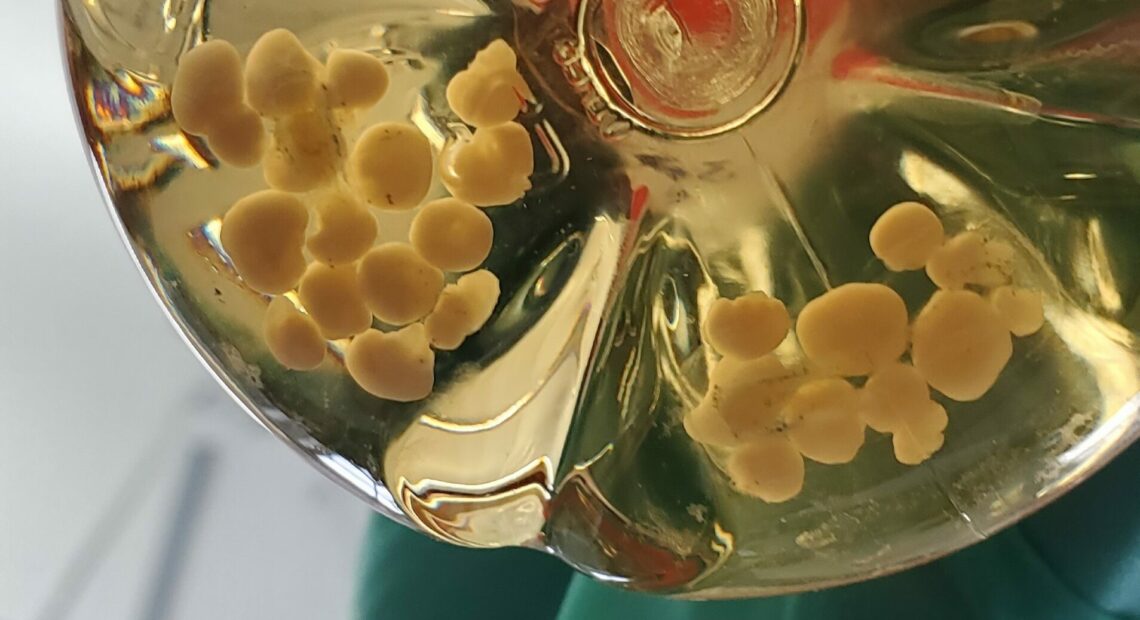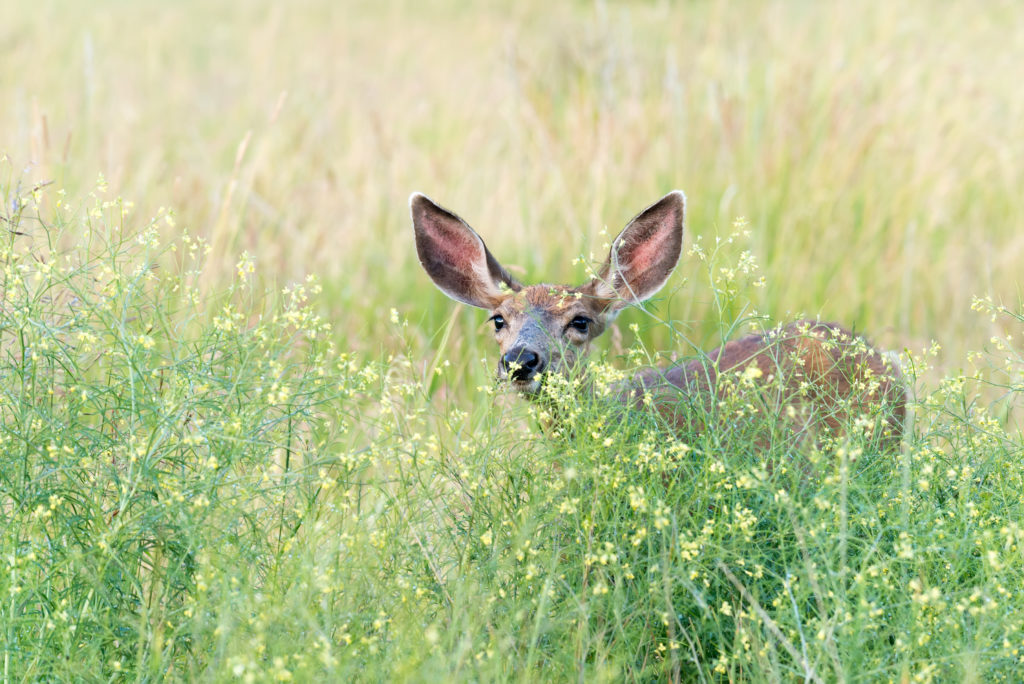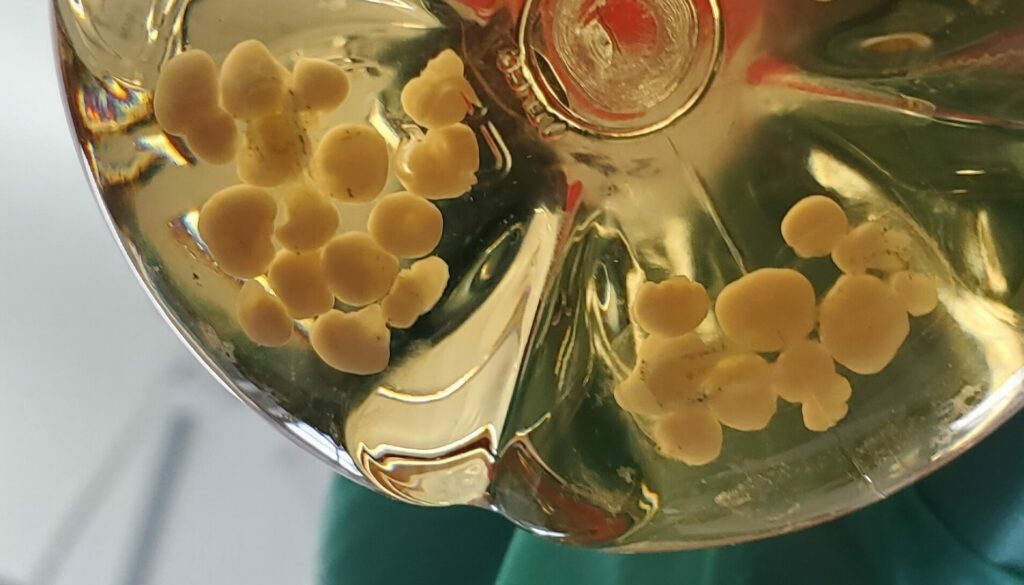
High steaks plate: Chronic wasting disease transmissibility to humans

Listen
(Runtime 4:46)
Read
Chris Rau — a home chef, hunter, and student in the College of Natural Resources at the University of Idaho — recently salvaged some elk meat after his friend hit the animal with her car. The elk was served at a dinner party. But the elk on the menu wasn’t tested for chronic wasting disease, an always fatal neurological disease that occurs in cervids, or members of the deer family. Panic Googling ensued.
The next day, a pre-published study from the June 2024 issue of the Emerging Infectious Diseases Journal dropped. It was the first to directly study animal-to-human transmission using human brain organoids. Chronic wasting disease is of high concern to hunters, ecologists and outdoor enthusiasts. An infection can spread through a herd, decimating local populations. It has been spreading throughout North America for decades. Cases have been reported in at least 34 states, including Idaho, where Rau got the elk he served at the dinner party.

In vitro organoid samples. (Credit: Cathryn Haigh / NIH/NIAD)
Chronic wasting disease is similar to bovine spongiform encephalopathy, otherwise known as mad cow disease, in bovines.
Chronic wasting disease also similar to scrapie in sheep and goats, and Creutzfeldt-Jakob disease in humans. These diseases are all transmissible spongiform encephalopathies, and are always fatal.
Prions are misfolded proteins which cause other proteins to misfold, and clump together nervous system tissue and create little holes in the brain, giving it a spongy appearance. Dr. Cathryn L. Haigh, the chief of the prion cell biology unit at the National Institute of Allergy and Infectious Diseases said, “Once this process starts, it’s kind of like a cascade. One changes the shape of the next and the next until the brain is overrun.”
Infected animals lose the ability to eat and take on a “zombie-like” appearance and behavior. Rau said he didn’t have any reservations when it came to serving the elk to his friends based on the animal’s condition. He took note of the animal’s condition and behavior while field dressing it. “This was a beautiful looking animal. It had a perfect full coat,” he said. “It had all the muscle mass that would be expected with a two-year-old cow elk.”
Chronic wasting disease is spread through the environment, the feces, urine and decaying body matter of infected animals. Prions can stay in the environment for years. Research from the University of Montana found they can also be taken up by plants and spread to animals who eat them.
There is significant concern about whether animal-to-human transmission of chronic wasting disease is possible. These concerns were heightened when in 2022, a case study reported hunters who ate venison from a herd that had infected deer died after developing sporadic Creutzfeldt-Jakob disease. The case study did specify that causation could not be determined but did not explicitly rule it out.
Mad cow disease is transmissible to humans however and causes variant Creutzfeldt-Jakob Disease, however scrapie is not. Haigh speculates that this is because of genetic closeness. “Looking back at our evolution, we are closer in this particular gene to cattle than we are to sheep, or to deer and elk,” she said.
Until recently, transmission of chronic wasting disease could only be studied in animal models. Research on non-human primates found that squirrel monkeys were highly susceptible to chronic wasting disease infections, but macaques could not contract the disease. Macaques are a closer animal model to humans, which strengthened the theory that there is a species barrier.
A recent scientific development, the human brain organoid, has allowed scientists to study the effects of chronic wasting disease in human brain tissue for the first time in vitro. These organoids are round, pea-shaped blobs of human brain tissue that are cultured from skin-derived stem cells.

The research team, from left to right: Simote Foliaki, Hadil El Soufi, Arielle Hay, Katie Williams, Cathryn Haigh, Taylor Fletcher and Bradley Groveman. (Credit: NIAD)
The research team used brain tissue samples from animals that died from chronic wasting disease and exposed the organoids to a highly infectious dose of the prions for seven days. “We kept growing them, incubating them for six months to see if that would start their own disease,” Haigh said. “With CWD, we did not get any infection of the organoids.” The study used Creutzfeldt-Jakob prions as a positive control, and the organoids contracted Creutzfeldt-Jakob disease.
Still, the environmental risks of chronic wasting disease remain. An outbreak can decimate whole populations of cervids. There is also a risk that the chronic wasting disease prion can mutate in a way that allows it to cross that species barrier. Prions have been shown to undergo Darwinian evolution. “We can never predict the future. So, there’s still a number of caveats to the work. I think we still need to be diligent in our testing,” Haigh said. The study also used cerebral organoids, and while chronic wasting disease can and does infect the cerebral cortex, the prions tend to concentrate in the brainstem which is made of different tissue.
It’s good practice to get any cervid you kill, whether by hunting or by hitting it with your car, tested for chronic wasting disease. In some places, it’s mandated by law.
But would Haigh have eaten the untested elk steak at Rau’s dinner party?
She said, “I would have eaten that elk steak.”















